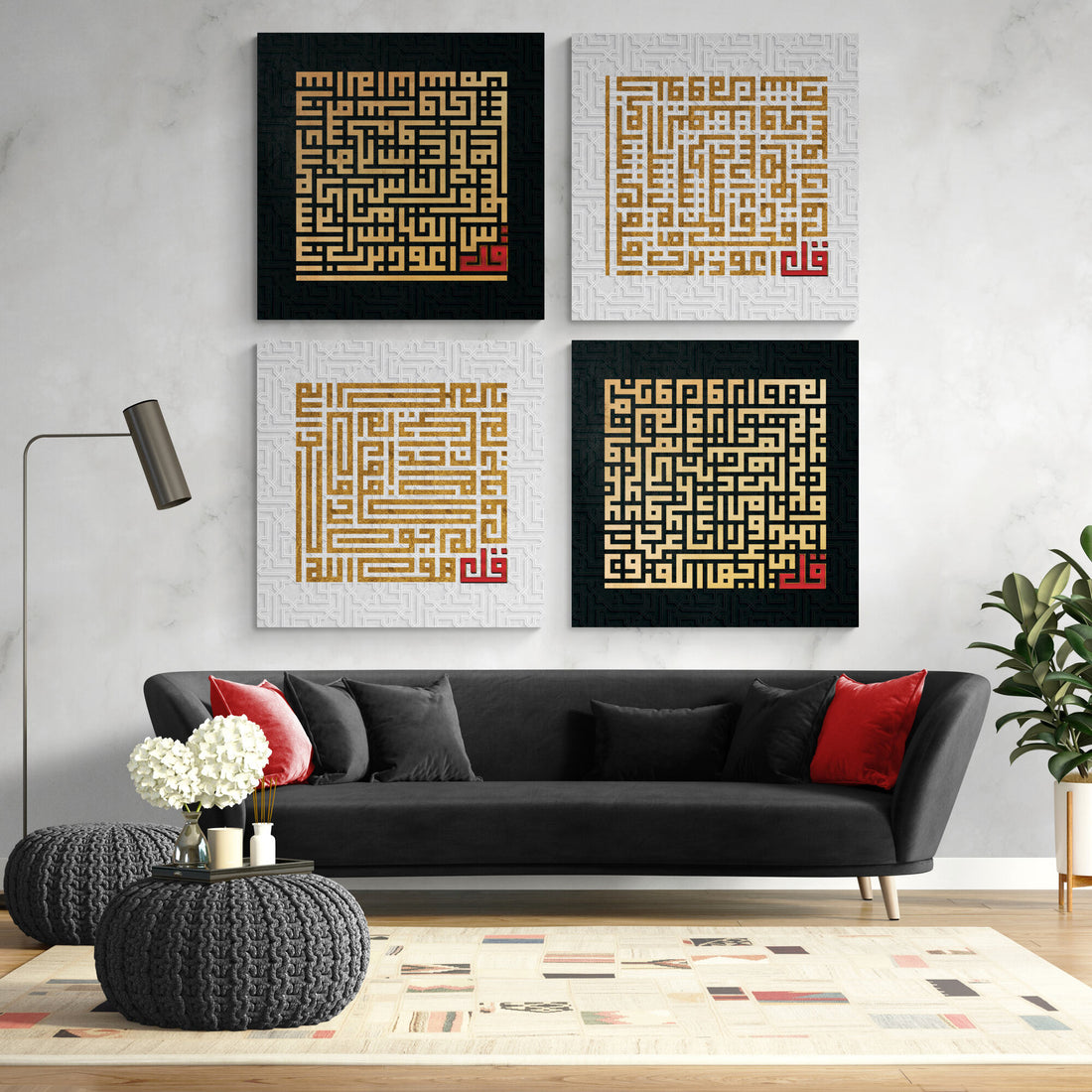
Islamic Tiles: A History and Guide
Share
Islamic tiles have a rich and varied history, with roots dating back to the 7th century in the Arab world. These intricate and beautifully designed tiles have long been used to decorate the walls and floors of mosques, palaces, and other important buildings, and have also found their way into private homes as a way to add a touch of elegance and beauty.
The history of Islamic tiles can be traced back to the Umayyad Caliphate, a powerful empire that ruled much of the Middle East and North Africa from the 7th to the 13th century. During this time, the art of tile-making reached new heights, with skilled craftsmen creating intricate patterns and designs using a variety of materials, including ceramic, glass, and stone.
One of the most famous examples of Islamic tiles can be found in the Alhambra Palace in Granada, Spain. This stunning palace, built in the 13th and 14th centuries, is adorned with intricate geometric patterns and intricate floral designs, all created using a variety of different colored tiles.
But it wasn't just the grand palaces and mosques that featured these beautiful tiles. Private homes and public buildings also incorporated them into their design, using them to add a touch of beauty and elegance to their surroundings.
In more recent times, Islamic tiles have become popular among collectors and interior designers, with many seeking out antique tiles or reproductions to use in their own homes. These tiles can be used in a variety of ways, from creating stunning backsplashes and fireplace surrounds, to decorating floors and walls.
If you're considering incorporating Islamic tiles into your own home, there are a few things to keep in mind. Firstly, it's important to choose tiles that are appropriate for the space you're working with. This means considering the size and scale of the tiles, as well as the overall design of the room. You'll also want to consider the color and pattern of the tiles, as well as the material they are made from.
Another important aspect to consider is the quality of the tiles. It's important to choose tiles that are made to last, as they will be a long-term investment in your home. Look for tiles that are made from high-quality materials and that have been crafted by skilled artisans.
Overall, Islamic tiles are a beautiful and enduring way to add a touch of elegance and history to your home. Whether you opt for antique tiles or reproductions, these beautiful works of art are sure to add character and beauty to any space.
The history of Islamic tiles can be traced back to the Umayyad Caliphate, a powerful empire that ruled much of the Middle East and North Africa from the 7th to the 13th century. During this time, the art of tile-making reached new heights, with skilled craftsmen creating intricate patterns and designs using a variety of materials, including ceramic, glass, and stone.
One of the most famous examples of Islamic tiles can be found in the Alhambra Palace in Granada, Spain. This stunning palace, built in the 13th and 14th centuries, is adorned with intricate geometric patterns and intricate floral designs, all created using a variety of different colored tiles.
But it wasn't just the grand palaces and mosques that featured these beautiful tiles. Private homes and public buildings also incorporated them into their design, using them to add a touch of beauty and elegance to their surroundings.
In more recent times, Islamic tiles have become popular among collectors and interior designers, with many seeking out antique tiles or reproductions to use in their own homes. These tiles can be used in a variety of ways, from creating stunning backsplashes and fireplace surrounds, to decorating floors and walls.
If you're considering incorporating Islamic tiles into your own home, there are a few things to keep in mind. Firstly, it's important to choose tiles that are appropriate for the space you're working with. This means considering the size and scale of the tiles, as well as the overall design of the room. You'll also want to consider the color and pattern of the tiles, as well as the material they are made from.
Another important aspect to consider is the quality of the tiles. It's important to choose tiles that are made to last, as they will be a long-term investment in your home. Look for tiles that are made from high-quality materials and that have been crafted by skilled artisans.
Overall, Islamic tiles are a beautiful and enduring way to add a touch of elegance and history to your home. Whether you opt for antique tiles or reproductions, these beautiful works of art are sure to add character and beauty to any space.
